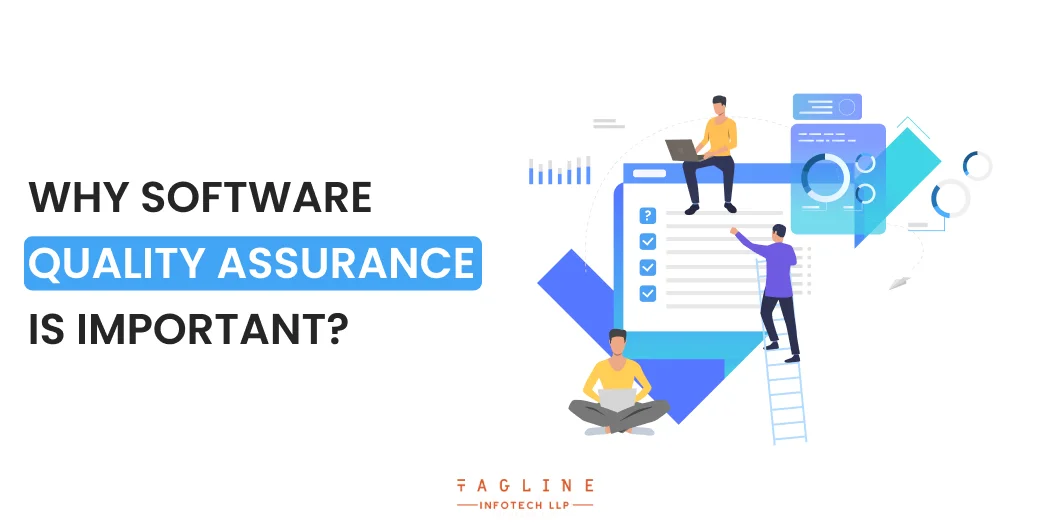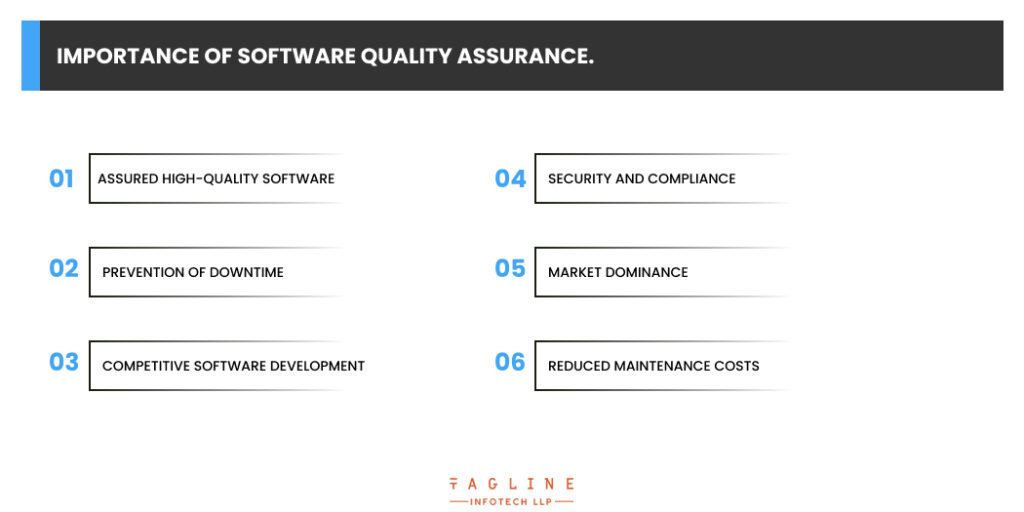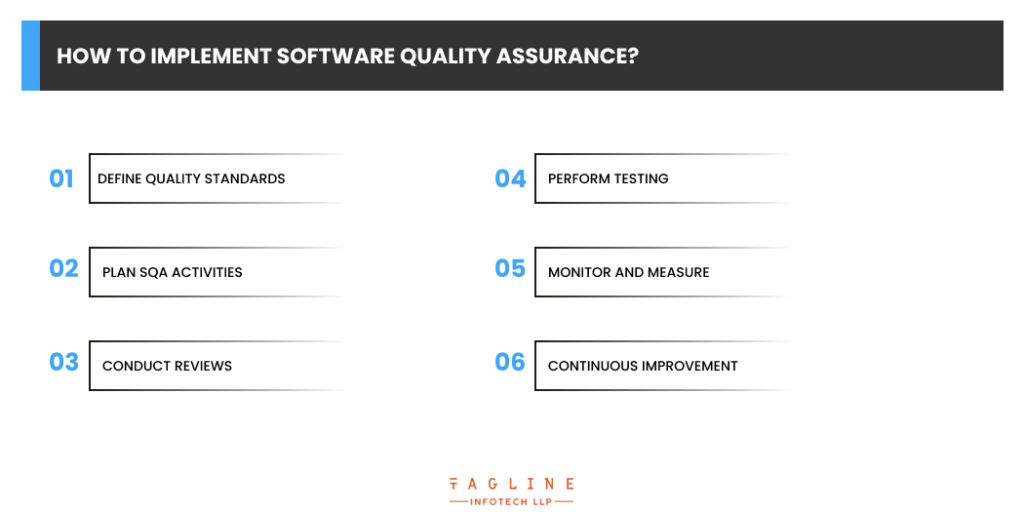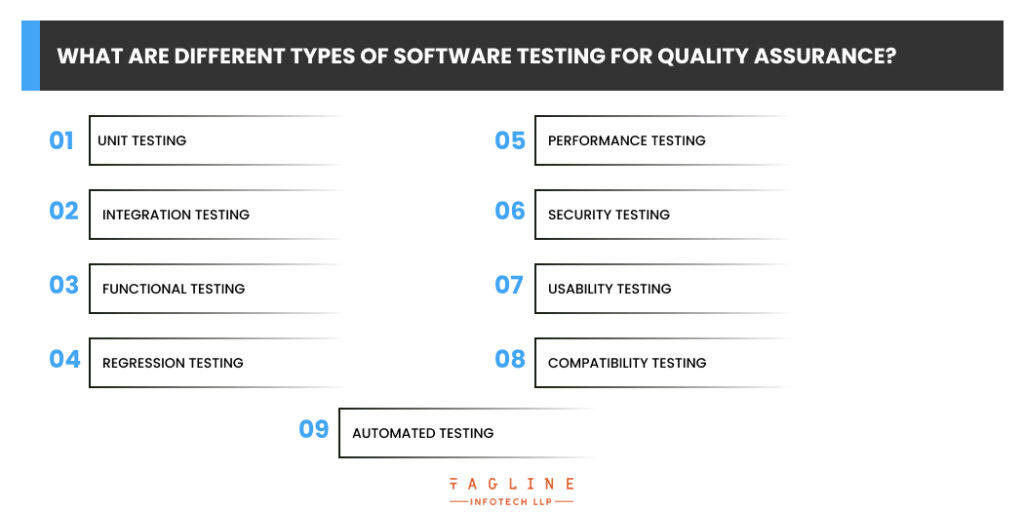Role of Python Libraries in Image Processing
October 30, 2025
Home >> Software >> Why Software Quality Assurance Is Important?

Quick Summary
Take a look at Software Quality Assurance in Action! We are dedicated to producing flawless software, from the code to the user experience. Explore our blog to learn more about software quality, its value, and the various SQA methods. Investigate how artificial intelligence dominates the testing industry.
Ever heard the saying ‘A single hole can sink an entire ship’? It’s not just a saying – it’s a principle that applies to the world of software quality assurance. Just like a tiny hole can lead to a sinking ship, even a minor flaw in your software can result in a substantial loss of potential traffic.
Real-life giants like Amazon, Netflix, Spotify, and LinkedIn serve as powerful examples. They’ve faced significant drops in traffic due to a single software bug. For instance:
Amazon grappled with a 30% traffic reduction in 2013 when a bug blocked customers from accessing their website.Netflix encountered a 50% traffic drop in 2016 due to a software glitch.
LinkedIn witnessed a whopping 70% traffic plunge due to a bug preventing user logins.
Even Spotify, a major audio streaming service, suffered a considerable traffic hit due to software bugs.
So, what enabled these industry giants to regain their dominance? The answer lies in meticulous software quality assurance and rigorous testing. Recognizing the importance of rectifying even the tiniest of bugs, this blog will walk you through the software quality assurance benefits and the fundamentals of ensuring top-notch software performance.
Software Quality Assurance functions as a parallel process to the software development life cycle, ensuring that the software product is fit for public release upon completion. The SQA process commences at the outset of software development and continues until release. This ongoing process involves testing the software against various quality standards to enhance its overall quality.
The paramount goal of SQA (software quality assurance) is to identify and rectify all defects and errors before the software’s release, resulting in a flawless end product.
There are four fundamental principles underpinning Software Quality Assurance:
Also Read : Benefits of Custom Software Development

Beyond bug rectification, the benefits of software quality assurance offer an array of compelling advantages that justify the investment.

To effectively implement Software Quality Assurance (SQA), a structured approach is imperative. The following steps outline a systematic method to implement SQA:
Looking to build Custom Software to drive your business Next-Level?
Hire Our team of skilled software developers is ready to build Whether it’s web, mobile, or desktop applications for your business.

Software Quality Assurance’s success hinges on meticulous testing and selecting the right tests for your product or specific functionalities. Here’s a breakdown of essential testing types:
In the world of software program development, Software Quality Assurance (SQA) emerges as a guiding light, ensuring that software program products no longer meet expectancies but additionally exceed them. Get in touch with a Software development company if you are trying to get a fully-featured solution for your business. The importance of SQA lies in its capability to reinforce software in opposition to flaws, boost performance, beautify safety, and provide customers with impeccable revel. By implementing a systematic technique, following essential principles, and embracing various checking-out methodologies, SQA paves the way for a software program landscape that is robust, aggressive, and dependent.
SQA complements software program reliability, consumer-friendliness, and performance. It prevents downtime, boosts market dominance, and decreases lengthy-time period renovation prices.
The principles include defect prevention, continuous improvement, stakeholder collaboration, and a hazard-primarily-based approach.
SQA ensures brilliant software, prevents downtime, enhances competitiveness, assures safety and compliance, and decreases maintenance expenses.
Implement SQA by defining first-rate standards, planning SQA activities, conducting opinions, appearing checking out, tracking and measuring, and continuously improving the technique.
The crucial trying out sorts consist of unit testing, integration checking out, practical trying out, regression checking out, overall performance checking out, security checking out, usability trying out, compatibility testing, and automated trying out.
Created with Solvase

Digital Valley, 423, Apple Square, beside Lajamni Chowk, Mota Varachha, Surat, Gujarat 394101
D-401, titanium city center, 100 feet anand nagar road, Ahmedabad-380015
+91 9913 808 2851133 Sampley Ln Leander, Texas, 78641
52 Godalming Avenue, wallington, London - SM6 8NW